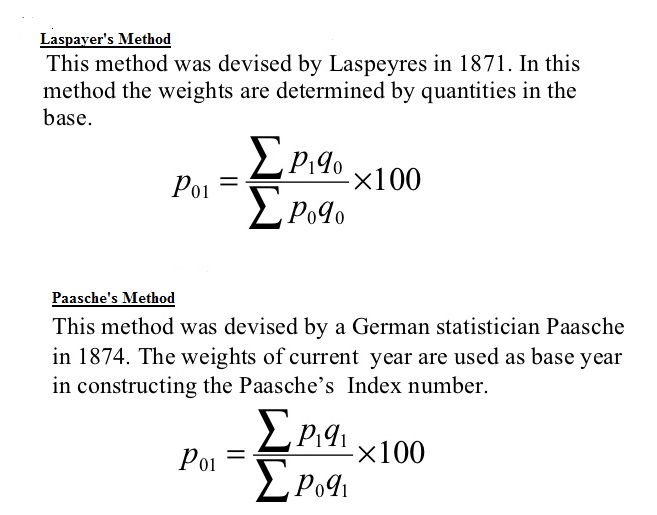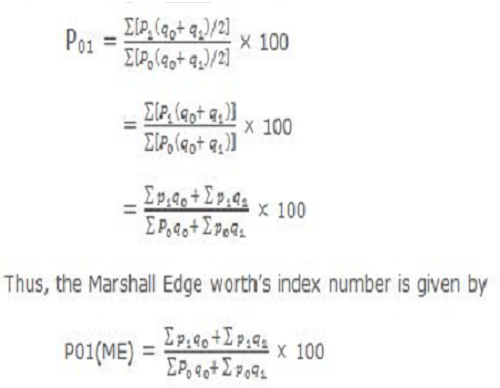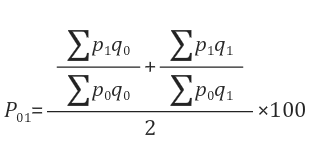





| Years : | 2000 | 2001 | 2002 | 2003 | 2004 |
| Index number : | 100 | 110 | 140 | 150 | 180 |
| Years : | Old index number (Base year 2000) |
New index number (Base year 1994) |
| 2000 | 100 | original price index/price index
for new base year x 100 = 100/150 x 100 = 66.67 |
| 2001 | 110 | 110/150 x 100 = 73.33 |
| 2002 | 140 | 140/150 x 100 = 93.33 |
| 2003 | 150 | 150/150 x 100 = 100 |
| 2004 | 180 | 180/150 x 100 = 120 |
| Years : | 2000 | 2001 | 2002 | 2003 | 2004 | 2005 | 2006 | 2007 | 2008 |
| Index number :2000 = 100 | 100 | 120 | 130 | 140 | 150 | ||||
| Index number : 2004 = 100 | 100 | 110 | 130 | 140 | 160 |
| Years : | 2000 | 2001 | 2002 | 2003 | 2004 | 2005 | 2006 | 2007 | 2008 |
| Index number :2000 = 100 | 100 | 120 | 130 | 140 | 150 | ||||
| Index number : 2004 = 100 | 100 | 110 | 130 | 140 | 160 | ||||
| Backward splicing | 100 x 100/150 = 66.67 |
120x100/150 = 80 |
130 x 100/150 = 86.67 |
140 x 100/150 = 93.33 |
100 | 110 | 130 | 140 | 160 |
| Years : | 2000 | 2001 | 2002 | 2003 | 2004 | 2005 | 2006 | 2007 | 2008 |
| Index number :2000 = 100 | 100 | 120 | 130 | 140 | 150 | ||||
| Index number : 2004 = 100 | 100 | 110 | 130 | 140 | 150 | ||||
| Forward splicing | 100 | 120 | 130 | 140 | 150 | 150x110/100 = 165 |
150x130/100 = 195 |
150x140/100 = 210 |
150x150/100 = 225 |